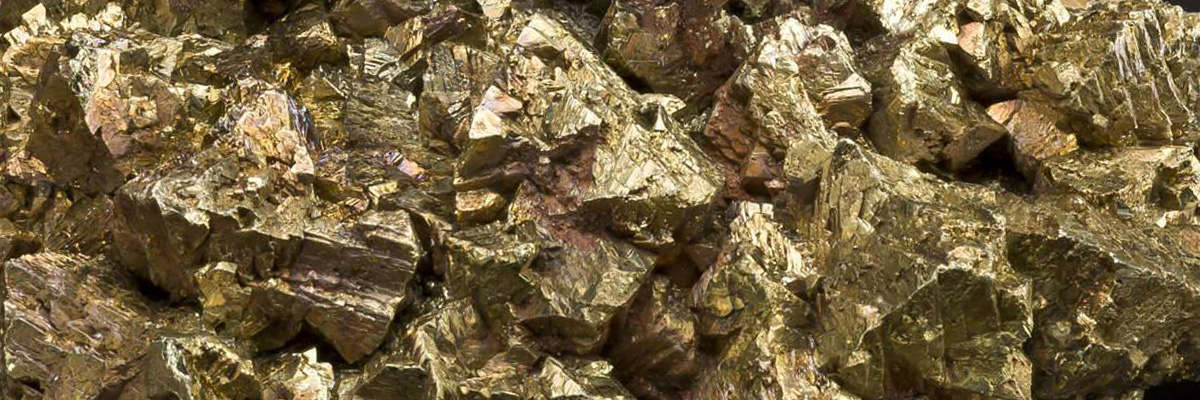Chalcopyrite is a sulfide mineral belonging to the class of sulfides and the subclass of tetragonal sulfide minerals. It is often called “Peacock Ore” due to its striking iridescent tarnish that exhibits a range of colors, including blue, green, and purple. Chalcopyrite’s physical characteristics include its brass-yellow color, metallic luster, and well-formed tetragonal crystals that can vary in size. It is often found in hydrothermal veins, igneous intrusions, and contact metamorphic environments.
Usage
Chalcopyrite serves as the primary ore for copper extraction, which is used in various applications, including electrical wiring, plumbing, and telecommunications. Copper is also utilized in the production of alloys, such as brass and bronze, which exhibit improved mechanical properties and corrosion resistance. Additionally, chalcopyrite’s distinctive iridescent tarnish makes it a popular specimen among mineral collectors and enthusiasts.
Gemstone
While chalcopyrite is not traditionally considered a gemstone, its striking iridescent colors and visual appeal make it a fascinating addition to jewelry and decorative objects. When polished and treated, chalcopyrite can be used in pendants, earrings, and other adornments, offering a unique and eye-catching alternative to more conventional gemstones.
Origin
Chalcopyrite is formed through various geological processes, such as the crystallization of hydrothermal fluids and the cooling of magma in igneous intrusions. These processes involve the combination of copper, iron, and sulfur atoms in high-temperature environments, leading to the formation of chalcopyrite crystals. Over time, these crystals can accumulate in deposits, creating ore bodies that can be mined for their valuable copper content. Chalcopyrite can also form in contact metamorphic environments, where high temperatures and pressures alter the composition of surrounding rocks.
Occurrence
Chalcopyrite can be found in a variety of geological settings, including hydrothermal veins, igneous intrusions, and contact metamorphic environments. Some of the most significant deposits of chalcopyrite are located in Chile, Peru, the United States, Canada, Zambia, and the Democratic Republic of Congo. These regions are known for their rich copper reserves and favorable geological conditions for the formation of chalcopyrite minerals.
Metaphysical:
In metaphysical and spiritual practices, chalcopyrite is believed to possess various properties. The mineral is said to encourage self-discovery, creativity, and the removal of energy blockages. Chalcopyrite is also considered a stone of abundance and manifestation, attracting wealth, success, and positive energy. Additionally, the mineral is thought to enhance one’s intuition, psychic abilities, and connection to the higher self, promoting spiritual growth and transformation.
| Class | Sulfides |
| Formula | CuFeS2 |
| Luster | Metallic |
| Hardness (Mohs) | 3.5 – 4 |
| Streak | Greenish-black |
| Color | Brass-yellow, tarnishing to iridescent blues, greens, and purples |
| Cleavage | Poor in one direction |
| Specific Gravity | 4.1 – 4.3 |


